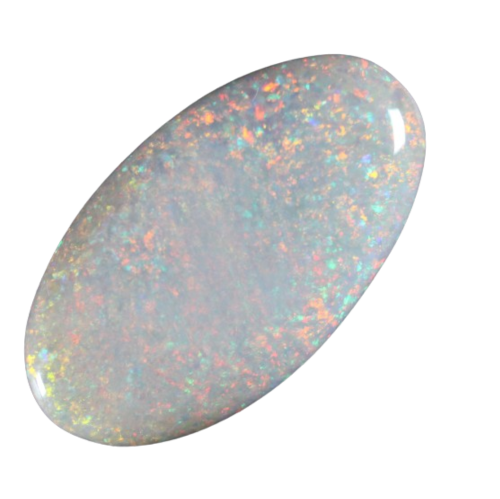Opal Information

Opal
Opal, a gemstone renowned for its vibrant play-of-color, captivates with its shifting hues that seem to dance across its surface. This mesmerizing phenomenon, known as opalescence, results from the diffraction of light within the silica spheres that compose the stone. Opals can exhibit a stunning array of colors, from fiery reds and oranges to soothing blues and greens, often appearing as though they contain entire galaxies within their depths. Cherished for centuries, opal is a symbol of creativity and inspiration, and its unique beauty continues to enchant gem enthusiasts and jewelry lovers worldwide.
Facts About Opal:
- Mineral Type: Opal is a hydrated amorphous form of silica.
- Locations Found: Significant deposits of opal are found in Australia (which produces around 95% of the world's opal), Ethiopia, Mexico, Brazil, the United States, and Slovakia.
- Mohs Hardness: Opal has a Mohs hardness of 5.5 to 6.5, making it relatively soft and susceptible to scratching and abrasion.
- Common Treatments: Opals are sometimes treated to enhance their appearance. Common treatments include oiling, resin impregnation, and sugar-acid treatments to darken the body color and enhance play-of-color.
- Refractive Index: The refractive index of opal ranges from 1.37 to 1.52.
- Birefringence: Opal is generally non-birefringent due to its amorphous structure, although some varieties may exhibit slight birefringence due to strain or impurities.
- Specific Gravity: Opal has a specific gravity of 1.98 to 2.25.
Opal's kaleidoscopic beauty and symbolic meanings have made it a treasured gemstone throughout history. Its vivid play-of-color is unlike any other gem, making each opal truly one of a kind. Despite its relative softness, with proper care, opal can be crafted into stunning jewelry pieces that capture the imagination. Whether admired for its aesthetic brilliance or its associations with creativity and inspiration, opal remains a gem of endless fascination and allure.
